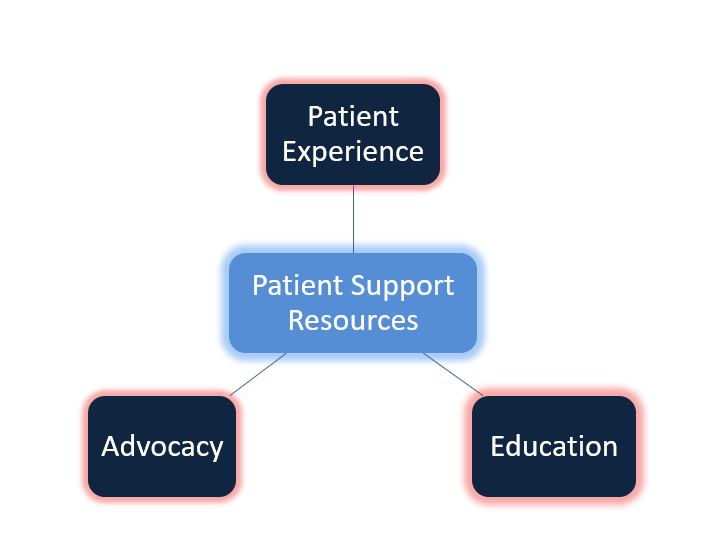Artificial Intelligence in Cardiology: Opportunities for Cardio-Oncology
History was made recently with the inaugural and first ever continuing medical education conference on artificial intelligence (#AI) in Cardiology. While most of the presentations were on artificial intelligence or cardiology or both, several sessions also made reference to other fields in which AI has been or is being used, such as Oncology. There was even one study presented on Cardio-Oncology. As study after study was presented, it became clear to me that perhaps several of these techniques and methodologies could potentially be useful to our patients in Cardio-Oncology.
Every single piece of technology started with one single prototype. Every single new piece of software started with one single algorithm. Every single patent started with one single idea. Every single idea started with the impact that disruptive technology could have for at least one single patient – one single case.
As I view various case reports in Cardio-Oncology, I think about how #AI could influence care delivery to potentially improve outcomes and the experience for each patient and their health professionals.
One example that was reiterated in multiple presentations was that of the ECG. Applying #AI to the ECG has been shown in the studies presented to determine the age, sex, and heart condition of the individual. Details were shown for a case of hypertrophic cardiomyopathy (yes, HCM, not just left ventricular hypertrophy) diagnosed via #AI analysis of an ECG that appeared relatively unremarkable to physicians’ eyes. After the septal surgery/procedure, although the ECG then looked remarkably abnormal to physicians’ eyes, the #AI algorithm could identify resolution of the hypertrophic cardiomyopathy.
Another example reiterated throughout the conference was identifying undiagnosed left ventricular systolic dysfunction, in a general community population and also in patients referred to a cardio-oncology practice at a large referral center.
Recently, #AI in Cardiology has been used most frequently for monitoring and detection of arrhythmias, such as atrial fibrillation. Everyone can purchase their own wearable to determine this. Physicians are also now prescribing these wearables for ease-of-use, given their pervasive presence and coupling with smartphones owned by much of the population or provided temporarily by the physician group. Such wearables are transitioning from standalone electrodes, to watches, skin patches, and clothing (e.g., shirts, shorts).
Many direct-to-consumer #AI applications in daily life actually are not wearable, such as Alexa and Siri. One study described the ability of #AI to help diagnose mood disorders and cardiac conditions and risk factors by simply “listening to” and analyzing voice patterns. The timing of a young man’s “voice breaking” can potentially predict his risk for heart disease!
A popular use for #AI in medicine overall is to assist with interpretation of various imaging, such as chest X-rays, MRIs, or CT scans. This applies in Cardiology as well. Further, in Cardiology, #AI is being used to help guide the procurement of echocardiograms. The algorithms provide visual instructions (such as curved arrows) to indicate directions in which the ultrasound probe should be moved to obtain the standard view, to which the algorithm is comparing the image being procured moment-by-moment. The idea is for #AI to help less experienced sonographers or echocardiographers learn and perform echocardiography even more expediently.
The theme of the conference was current advances and future applications of #AI in Cardiology. Accordingly, a historical perspective was given, describing some of the earliest attempts at #AI in various fields. A video of a possible precursor to current automated vacuum cleaners was shown, from archives dating back to the 1960s. In addition to ways in which #AI is now being studied or applied, future opportunities for using #AI were also postulated, for example for coronary artery disease, since stress tests are not 100% sensitive and the gold standard coronary angiography is invasive. #AI could help stratify patients who needed versus did not need the invasive procedure for recurrent convincing symptoms in the absence of a positive stress test. Of course, coronary CT angiography could help fill this gap, but #AI might assist with decision-making sooner.
There have been studies on #AI in Cardiology, and studies on #AI in Oncology, and at least one study in #AI in Cardio-Oncology – a study I predicted; one that is quite intuitive and mentioned above. I propose that we continue to apply #AI in Cardio-Oncology, so that the field can catch up with the rest of Cardiology and Oncology, and help us continue to develop this emergent and burgeoning multidisciplinary subspecialty.
This is an exciting time for me to be alive. I am an early adopter of artificial intelligence. I look forward to seeing more and more the availability of #AI to enhance our use of electrocardiography, echocardiography, wearables, biosensors, voice analysis, and more in Cardiology, and particularly in Cardio-Oncology, with an emphasis on primary and primordial prevention even before secondary and tertiary prevention in the area of Preventive Cardio-Oncology, and especially in women.
